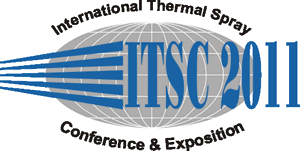
|
2671 |
|
Tuesday, September 27, 2011, Saal C2.1 12:15 PM Wear Protection 1 |
|
Functionally graded WC-Co/NiAl HVOF coatings for damage tolerance, wear and corrosion protection |
|
Luca Lusvarghi / University of Modena and Reggio Emilia , Italy Giovanni Bolelli* / Department of Materials and Environmental Engineering, University of Modena and Reggio Emilia, Italy Valeria Cannillo/ Department of Materials and Environmental Engineering, University of Modena and Reggio Emilia, Italy Roberto Rosa/ Department of Materials and Environmental Engineering, University of Modena and Reggio Emilia, Italy Alfredo Valarezo/ Colegio Politécnico, Universidad San Francisco de Quito, Ecuador Wanhuk Choi/ Center for Thermal Spray Research, State University of New York at Stony Brook, USA Christopher Weyant / Center for Thermal Spray Research, State University of New York at Stony Brook, USA Sanjay Sampath/ Center for Thermal Spray Research, State University of New York at Stony Brook, USA |
|
The applicability and benefits of using functionally graded coatings via HVOF spraying is discussed in this paper. The deposit of a compliant-ductile-soft compound, in the present case Ni-5wt.% Al, graded towards a more stiff-brittle-hard layer, WC-Co, produced a damage tolerant structure with assured wear and corrosion protection capabilities. The graded structure is proposed as an alternative to deposit thick coatings capable to arrests cracks propagating into the deeper ductile layers in compressive residual stress, while maintain the sliding wear and corrosion resistance of the carbide layer. As the stress built-up during deposition is reduced in the NiAl-rich layers as measured via curvature method, it is possible to deposit thick coatings with lower risk of delamination. Thermal stresses within the layers and the substrate (stainless steel) are also reduced as measured from low temperature thermal cycling tests. The mechanical behaviour of the top layer in the graded structure at relatively low loads (i.e. pin-on-disk) is equivalent to the same layer without gradation, whereas at high loads (i.e. ball drop impact test) the enhanced compliance with depth increases the load bearing capability of the graded structure. Electrochemical corrosion tests demonstrated no significant interconnected porosity and therefore, no interaction of the graded layers with the topmost WC-Co layer. The properties of the graded layers are measured individually and within the graded structure as to find out the effect of the processing of the subsequent layers. The deterioration of the deeper layers under wear and corrosive conditions are also tested to investigate their performance in the scenario that the top layer coating wears out exposing the deeper layers to the surface. |